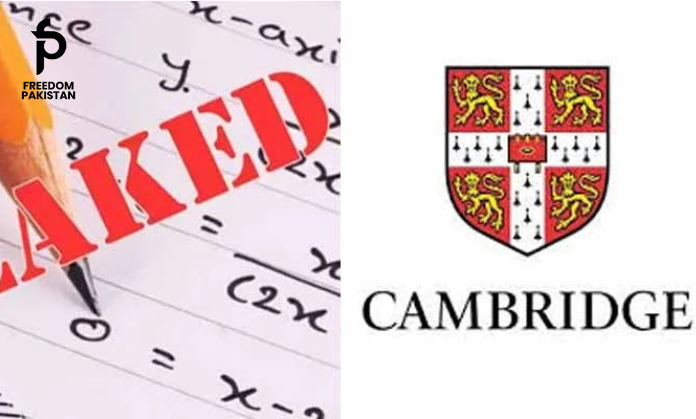Every year, the QS World University Rankings assess global higher education institutions across metrics like academic reputation, faculty-to-student ratio, citations per faculty, employer reputation, sustainability, research output, and international collaboration. These rankings play a crucial role in shaping perceptions, attracting foreign students, and guiding national policy. In 2026, 18 Pakistani universities secured positions in the QS rankings, reflecting the evolving quality of higher education in the country.
This article explores:
-
Who made the 2026 list
-
How Pakistan compares regionally (for SEO: “Pakistan higher education QS 2026”)
-
The strengths, weaknesses, and future opportunities of these institutions
Pakistan’s Presence in QS 2026 Rankings
Pakistan-wise, around 27 universities appeared in the QS Subject Rankings 2025, with most falling between 351–1,000 globally, and a standout in nuclear engineering – PIEAS ranked 101–150 in that field. For the broader overall world rankings, Pakistan had 18 universities featured in 2026, echoing a steady improvement from the 14–15 universities listed in earlier years .
However, Pakistan continues lagging behind India, which typically places 30+ universities in QS rankings, with many in top 200–500 bracket . Still, Pakistan’s consistent presence reflects a positive trend rooted in rising research output and international cooperation.
The 18 Pakistani Universities in QS 2026
Here’s a curated list of the 18 Pakistani universities that earned a spot in the QS World University Rankings 2026, grouped into tiers:
Top Tier – Global rank ~300–600
-
Quaid-i-Azam University (QAU), Islamabad (~315)
-
National University of Sciences & Technology (NUST), Islamabad (~350)
-
Lahore University of Management Sciences (LUMS), Lahore (~535)
Second Tier – Ranked ~570–760
-
University of the Punjab, Lahore (~570)
-
University of Agriculture, Faisalabad (UAF) (~690)
-
Pakistan Institute of Engineering & Applied Sciences (PIEAS), Islamabad (~700)
-
COMSATS University Islamabad (CUI) (~810)
-
University of Engineering & Technology (UET), Lahore (~755)
Third Tier – Global rank ~900–1,000
-
University of Peshawar (~925)
-
The University of Lahore (UoL) (~975)
Fourth Tier – Rank 1,000–1,400
-
University of Karachi
-
Bahauddin Zakariya University (BZU), Multan
-
International Islamic University Islamabad (IIUI)
-
National University of Modern Languages (NUML)
-
Government College University (GCU), Faisalabad
-
University of Management & Technology (UMT), Lahore
-
Air University, Islamabad
-
Lahore School of Economics (LSE), Lahore
(These lower-tier universities appeared in previous QS ranking runs 2023–2025 and are expected to feature similarly in 2026).
Spotlight on the Top 3
1. Quaid‑i‑Azam University (QAU)
-
Ranked ~315 in 2026, the top university in Pakistan.
-
Highly respected across natural sciences—QS rated its Physics, Mathematics, and Agriculture programs among Asia’s top 200.
-
Known for strong research centers like plasma physics, international partnerships, robust library systems, and over 38 departments.
2. NUST
-
Comes in around 350th globally, excelling in engineering, computer science, and mathematics—ranking 251–400 across these domains in QS.
-
Gains from impressive academic and employer reputations, substantial international networks, and hands-on, industry-linked research programs.
3. LUMS
-
At approximately 535, LUMS is Pakistan’s strongest in business, law, liberal arts, economics, and management studies—ranks 300–400 globally in those fields.
-
Gains national recognition for entrepreneurship, alumni success, and modern campus infrastructure.
Subject-Specific Achievements
Pakistan shows excellence in several subject areas:
-
Nuclear Engineering: PIEAS ranks world 101–150—Pakistan’s best globally.
-
Medicine: Aga Khan University placed 301–350.
-
Computer Science: NUST ranks 351–400, COMSATS at 451–500, UET and LUMS within 400–550.
-
Business/Economics: LUMS 301–400, IBA 401–450, COMSATS 451–500 .
-
Chemistry/Physics: QAU, NUST, and COMSATS performed well across 401–550 brackets .
Underlying Strengths of QS‑Ranked Universities
-
Research Productivity: Publications from QAU and NUST drive academic reputation, pressuring them into global citation leagues.
-
Employer Reputation: LUMS, NUST, PIEAS rank high thanks to strong job placement networks.
-
Specialized Excellence: Institutions like PIEAS have pinpointed niche strengths (e.g., nuclear engineering), while Aga Khan shines in medicine.
-
Global Collaboration: Partnerships with universities in the UK, US, and elsewhere improve metrics like International Research Network and academic reputation.
Persistent Challenges
Despite gains, Pakistani universities face hurdles:
-
Underfunding: Many public universities struggle financially, limiting faculty research support and infrastructure development.
-
Faculty Ratio & Output: High student-to-faculty ratios and fewer PhDs per faculty member reduces citation impact.
-
Internationalization: Low proportions of international students and faculty hurt rankings in global perspectives.
-
Fragmented Strategy: Weak coordination between universities, government, and industry hampers systemic improvement.
Opportunities Ahead
The 2026 results point to key opportunities:
-
Unlocking Niche Areas: With further investment, PIEAS and Aga Khan can dominate global rankings in Nuclear Engineering and Medicine.
-
Focus on Emerging Fields: Strength in AI, Data Science, Renewable Energy—aligned with national priorities—can help.
-
Intensifying Collaboration: More joint programs and research grants with top global universities can elevate performance.
-
Policy Support: The Higher Education Commission (HEC) could incentivize targeted funding, research grants, and faculty development tied to QS metrics.
How Pakistan Compares Regionally
While India consistently places 30+ universities, including IITs and IIMs, within QS top 200–500, Pakistan’s count has hovered at 15–18 in the 300–1,400 range. This gap underlines the urgent need for investment in faculty quality, research, and infrastructure.
Yet compared to regional peers like Bangladesh and Sri Lanka, Pakistan outperforms significantly—ranking more universities and earning subject-specific accolades.
Pakistan’s Strengths & Weaknesses from Recent Commentary
-
A Dawn report highlighted that 27 universities ranked across 55 subjects globally, but that limited funding and need for international collaboration and focus on AI, Data Science, Renewable Energy were identified as major challenges.
-
Pakistan’s QS performance relies heavily on academic reputation (30%), citations per faculty (20%), employer reputation (15%), and new metrics like sustainability, employment outcomes, and international research network (each 5%)
Structural Challenges from Stakeholder Perspectives
A vice-chancellor, highlighted that despite upward trends, chronic underfunding and fragmented strategic planning — particularly in emerging fields like AI, data science, and renewable energy — pose significant barriers to sustainable progress . Additionally, community forums like Reddit echo concerns over subjective ranking indicators, limited internationalization, and occasional ethical compromises in university leadership practices — issues known to dilute Pakistan’s academic credibility.
Warning Signs on Climate Flashing Bright Red
You Can Also Read This
Failures in Pakistan’s Education System
1. Chronic Underfunding
-
Pakistan consistently allocates less than 2% of its GDP to education, far below UNESCO’s recommended 4–6%.
-
As of 2024, only 1.7% of GDP was spent on education, limiting investment in research, infrastructure, and faculty development.
-
Many public universities face severe budget cuts, resulting in delayed salaries, halted research, and deteriorating facilities.
2. Lack of Quality Control
-
There’s no uniform curriculum or standardization across provinces, especially in primary and secondary education.
-
Many private and public institutions operate with limited quality assurance, leading to vast disparities in learning outcomes.
-
The faculty-student ratio in universities is highly imbalanced (often 1:50 or worse), affecting teaching quality.
3. Brain Drain & Low Research Output
-
Highly skilled graduates and PhDs often leave Pakistan for better opportunities abroad.
-
Pakistan ranks poorly in global research output per capita — despite an increase in the number of PhDs, the citation impact remains low.
-
A 2023 UNESCO report noted that Pakistan contributed less than 0.5% to global scientific publications, with limited patents or high-impact papers.
4. Equity and Access Issues
-
There are massive urban-rural disparities: urban students access elite private schools and international curricula, while rural schools often lack electricity, internet, or even teachers.
-
Gender gaps persist: although enrollment for girls has improved, dropout rates for girls post-primary remain high, especially in Khyber Pakhtunkhwa and Balochistan.
5. Outdated Curriculum
-
Many schools and universities still rely on rote memorization and outdated syllabi.
-
There’s limited focus on critical thinking, digital literacy, soft skills, or entrepreneurship — all vital for a globalized workforce.
Areas of Betterment & Progress
1. Expansion of Higher Education Institutions
-
From fewer than 30 universities in 1990 to over 230 recognized institutions today, Pakistan has rapidly expanded its higher education network.
-
Institutions like NUST, LUMS, PIEAS, COMSATS, and QAU have earned regional and global recognition in the QS and Times Higher Education rankings.
2. Increase in Research Output
-
Research publications from Pakistan increased sixfold between 2005 and 2020, according to Scopus data.
-
Fields like nuclear engineering, agriculture, computer science, and medicine have seen visible improvement in both quantity and citations.
-
University-industry linkages, though still nascent, are growing in sectors like IT, energy, and biotechnology.
3. Digital Learning & E-Governance
-
The HEC’s Smart University Project and Virtual University of Pakistan have improved access to digital education.
-
Platforms like TeleTaleem, Digiskills.pk, and Taleemabad offer remote learning and vocational training across underserved regions.
-
EdTech startups are increasingly filling the gap in areas like test prep, STEM learning, and skill-based education.
4. International Collaboration
-
Pakistani universities have signed over 500 MoUs with global institutions, particularly in China, the UK, Germany, and the USA.
-
Programs like Pak-USAID scholarships, Commonwealth fellowships, and Horizon Europe participation have improved both outbound and inbound mobility.
5. Policy Interventions
-
The Single National Curriculum (SNC) aims to standardize educational content across public and private sectors, though implementation remains uneven.
-
National Education Policy Framework 2021 (by MoFEPT) targets inclusive and lifelong learning, promoting early childhood education, adult literacy, and STEM focus.
-
Punjab and Sindh education reforms (via PEF, SEF) have introduced performance-based funding, school vouchers, and public-private partnerships.
Conclusion
Pakistan’s inclusion of 18 universities in the QS World University Rankings 2026 is encouraging, reflecting growth in research, reputation, and specialization. The nation’s performance in niche subjects like nuclear engineering, medicine, computer science, and business underscores its rising academic stature.
Still, to catch up with regional leaders like India, sustained investment, strategic planning, and global partnership are essential. Targeting faculty quality, international student/faculty diversity, and research excellence—especially in emerging disciplines—will accelerate Pakistan’s higher education revolution.












